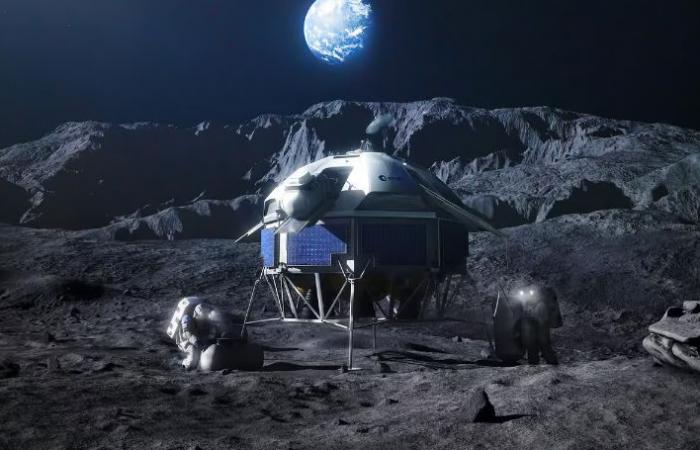Equipped with high-precision autonomous landing capabilities, the European Space Agency’s Argonaut lunar lander opens new perspectives for lunar exploration. We interviewed Professor Hichem Snoussi from the University of Technology of Troyes, who is leading a project aimed at integrating artificial intelligence and machine learning into the landing system of this lunar lander.
In the field of lunar exploration, theEuropean Space Agency (ESA) plans to develop Argonaut, an autonomous and versatile lunar lander, capable of carrying a significant payload of more than two tons. This project stands out from the initiatives of private American companies, which focus on landers with a payload capacity of 150 to 200 kilos as part of the program Commercial Lunar Payload Services (CLPS) from NASA.
This lander will be designed to perform a wide variety of logistical missions. It will be able to transport consumables for astronauts (water, food), cargo, scientific instruments and even a rover. Additionally, this lander will play a crucial role in establishing a lunar station capable of producing and distributing energy, both during the day and during lunar nights.
To ensure the presence of a European astronaut on the Moon, ESA is preparing to begin negotiations with NASA. The Argonaut program is envisaged as a cooperative proposal to support the logistics of the Artemis missions in exchange for the presence of a European on the Moon in the early 2030s.
Autonomy and precision of the lander
To convince NASA, the Argonaut lander must demonstrate highly precise autonomous landing capabilities, thus ensuring incident-free landings on crowded terrain.
To meet this challenge, ESA called on the expertise of the EUT+ alliance, which brings together nine European universities, including the University of Technology of Troyes. Professor Hichem Snoussi is leading a project there aimed at integratingartificial intelligence and machine learning (machine learning) to optimize the safety of lunar landings.
Lunar Hazard Detection
As Professor Snoussi explains, “ landing safely on the Moon poses a major technical challenge “. Examples include the failures to land the Indian Vikram probe (September 2019), the Japanese Hakuto-R (April 2023) and the Russian Luna 25 in August 2023.
To ensure a smooth landing at Argonaut, “ our project aims to develop artificial intelligence capable of detecting dangers on the lunar surface in real time thanks to‘analysis of‘images captured by the cameras and a Lidar on board the cargo ship “. The approach adopted is based on “ techniques‘advanced learning, including zero-shot learning which will use a model pre-trained adapted to the lunar surface ».
“Our project aims to develop artificial intelligence capable of detecting dangers on the lunar surface in real time through the analysis of images captured by cameras and a Lidar on board the cargo ship”
Unlike traditional methods, “ which require millions of manually annotated data “, this technique allows “ l‘IA d‘identify hazards from existing images without requiring prior human classification. This reduces annotation work “while improving the accuracy of detection of anomalies, such as craters or rocks hidden under lunar shadows ».
Concretely, the algorithms of this system “ which will operate autonomously » are designed to “ identify normal objects, detect anomalies on the lunar surface, but also eliminate false alarms “. The detection capacity is optimized at “ from‘an altitude of several tens of kilometers, which seems sufficient to us to guarantee a risk-free landing on the targeted terrain ».
In conclusion, Professor Hichem Snoussi emphasizes that the objective of this collaboration is to provide a robust solution to the challenges posed by the lunar surface in order to “ reduce the risks of failure during lunar landings and ultimately enable safer and more efficient manned missions “. By developing this technology, “ We are not only taking a step toward safe lunar landings, but also paving the way for bold future explorations of lunar landings.‘space », he wants to clarify. Indeed, if this system could also be used to “ navigation on the Moon by detecting obstacles and craters, thus facilitating their exploration and visit and allowing, for example, the collection of samples from various lunar sites “, this technology could just as easily be ” suitable for missions on Mars ».






